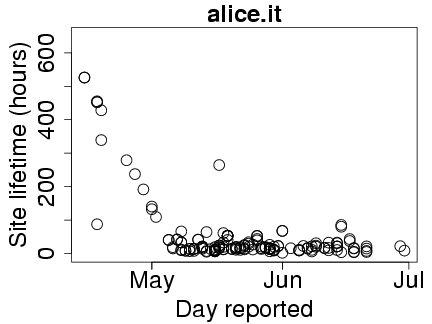beepbeep:~ zen$ telnet smtp.tiscali.it 25
Trying 213.205.33.13...
Connected to smtp.tiscali.it.
Escape character is '^]'.
421 averell.tiscali.it Service not available - too many connections
beepbeep:~ zen$ telnet smtp.tiscali.it 25
Trying 213.205.33.13...
Connected to smtp.tiscali.it.
Escape character is '^]'.
220 joe.tiscali.it ESMTP Service (7.3.122) ready
That is, the smtp relay for the entire tiscali network in Italy is a load balancer with ip address 213.205.33.13, which balances over two hosts
- averell.tiscali.it has address 213.205.33.55
- joe.tiscali.it has address 213.205.33.54
Anyway, it looks like the balancer has been configured with a dumb round robin (and with limits greater than those configured on the backend hosts). Please note that I’m connecting always from the same IP.
Net result: the balancer is useless. Half of the connections to the service get reset because of a single overloaded host. An innovative way to rate-limit the use of a service.
I’m writing this post waiting for my mails to get through.
Being sick and locked inside home makes me aggressive, did you notice?
